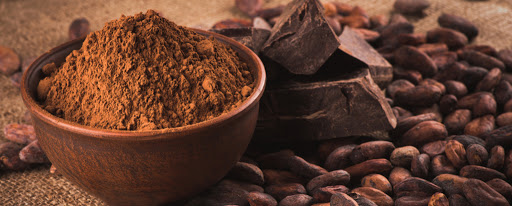
Like me, you’ve probably seen containers of cocoa powder and even perhaps bundles of organic cacao powder and questioned; exists a distinction?
For several years I truly thought there was none, but I was wrong. Unfortunately the use of the terms “cacao” versus “cocoa” on chocolate items is inconsistent; which confuses matters a lot more.
These 2 foods definitely are comparable and start from the very same source; seed- pods of the Theobroma cacao tree. The pods are cracked open and the seeds inside, the cacao beans, are where cocoa (for chocolate) and cacao stem. Where they part ways remains in the processing; which impacts their dietary worth and makes the most significant difference in between the two.
While these cacao beans can be eaten raw and are really healthy, they do have an extremely bitter taste. We understand chocolate, especially dark chocolate, has many health benefits and is even thought about a super-food; with more anti-oxidants than blueberries. All of the chocolate products we eat are stemmed from cacao seeds in some kind or another.
Both cocoa and cacao are offered in different forms including nibs, chips, butter, powder and chocolate bars. Here’s the difference in between the two.
While they may look the same, there actually is a distinction. Raw cacao is made by cold-pressing, un-roasted cacao beans; preserving the live enzymes in the cacao and eliminating the fat (cacao butter).
Cocoa powder is raw cacao that’s been roasted at heats; which changes the molecular structure of the cacao bean, minimizing the enzyme content, and lowering the overall dietary worth.
Cacao is abundant in minerals; magnesium, iron, potassium, selenium, calcium, zinc, chromium, copper and manganese. It’s likewise the wealthiest food-source of magnesium. Minimally-processed raw cacao products include little or no added sugar and are greater in antioxidants than high-processed products.
Minimally-processed cacao has more powerful antioxidant results and health benefits. One hundred grams of raw cacao powder has an ORAC (oxygen radical absorbance capacity), ranking of 95,500; which represents antioxidant capacity. This drops to 62,100 for cacao nibs, and 26,000 for cocoa powder. Plainly, the more it is processed, the lower the dietary content.
Let’s be clear. Cocoa is not “bad” for you; cacao is just more useful.
Cacao nibs are just cacao beans that makers have chopped into little pieces. They’re like a less-sweet chocolate chip product, however with no sugarcoated or artificial sweeteners. They maintain all the nutrients and antioxidant power of raw cacao beans. You can snack on these all by themselves, include them to a homemade trail mix, or use them in place of chocolate chips. Simply do not anticipate them to be sweet like the chocolate chips we normally discover in the grocery store.
Cacao butter is made from the fattiest part of the cacao bean. It’s white, with a rich, fatty texture. It looks and tastes a bit like white chocolate and you can use it in baking or even as a skin moisturizer.
Let’s briefly talk about cocoa too; there are 2 types offered.
Dutch-processed cocoa, likewise called dark cocoa, undergoes extra processing with an alkalized chemical service to make the taste of completion item richer and less acidic. Unfortunately, this additional processing just increases the destruction of all the remarkable antioxidants and nutrients.
Natural cocoa powder is somewhat more acidic and bitter than Dutch-processed. You’ll find it frequently in dishes that call for baking soda due to the fact that the soda alkalizes the natural cocoa powder.
Cocoa or cacao make a remarkably soothing and tasty cup of hot chocolate.
Either one can be utilized in dishes calling for cocoa powder. I find organic cacao powder in my local Walmart and I use it in my healthy smoothies, hot chocolate and for baking. When picking a chocolate bar, try to find one that lists 70% cacao material or higher; if you want one that will provide you the most health value.
Facebook Comments
